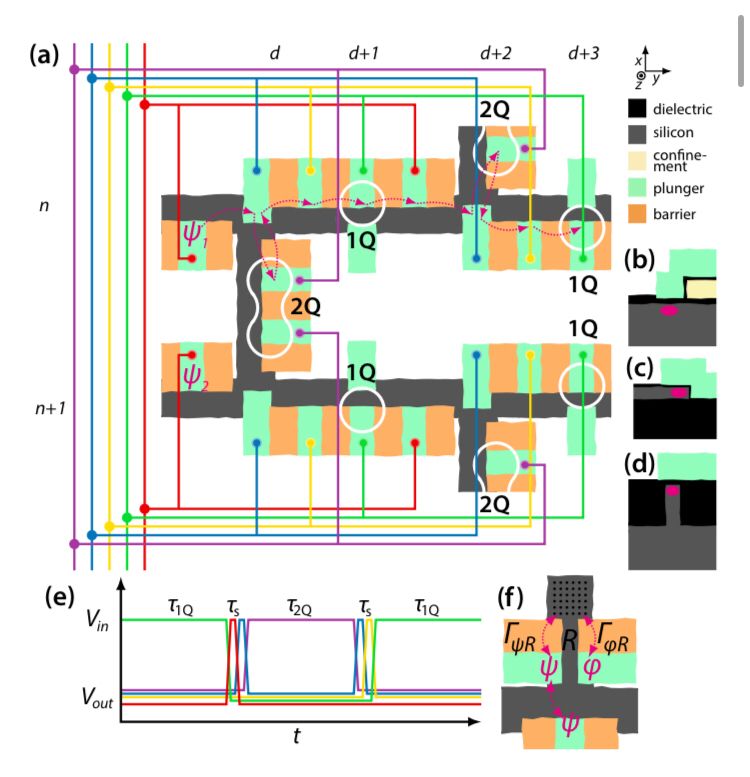Pipeline quantum processor architecture for silicon spin qubits

We present a new idea to process quantum information using silicon technology: The Pipeline.
NISQ devices offer us the opportunity to achieve quantum advantage over classical systems without the use of full quantum error correction. We propose a NISQ processor architecture in which qubit states travel through a layered physical array of structures which realise single and two-qubit gates, instead of spatially static qubits to which quantum operations are performed. We call this approach the pipeline.
The pipeline can be achieved since NISQ algorithms often require multiple repetitions of the same qubit circuit, or simple variations of this circuit, to be performed. This means that identical or similar local control fields can be repetitively applied to the qubits.
In exchange for simplifying run-time control, a larger number of physical structures is required. To reduce the number of physical structures required, qubit states can be ‘pipelined’ densely through the arrays for repeated runs. Silicon spin-qubit platforms are especially well suited to this approach due to their high qubit density and scalability.
We have designed the pipeline to operate using exclusively global control techniques which reduce the number of classical computing resources needed to operate the processor while also tolerating a high degree of qubit variability and noise.
The Quantum Motion team that achieved this work included: Sofia Patomäki, Fernando Gonzalez-Zalba, Michael Fogarty, Zhenyu Cai, Simon Benjamin and John Morton.
